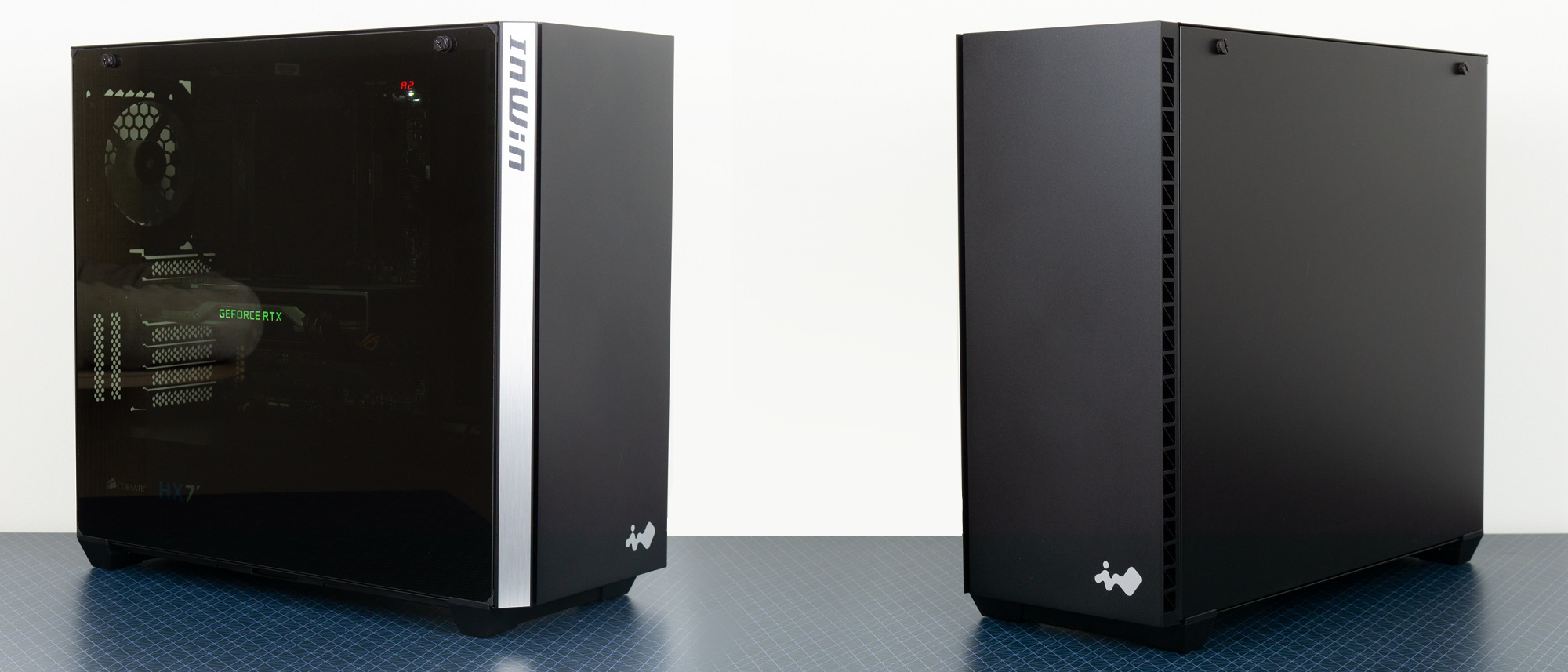Why you can trust Tom's Hardware
System Configuration
We are using the following system for our case test bed:
| CPU | Intel Core i9-9900K |
|---|---|
| Motherboard | Asus Maximus XI Hero WiFi |
| Memory | Corsair Vengeance LPX 3000 MHz, 16 GB (2x 8GB) |
| Graphics | Nvidia GeForce RTX 2070 Super Founder's Edition |
| CPU Cooling | Noctua NH-U12S Chromax Black |
| Thermal Paste | Noctua NT-H2 Thermal Paste |
| Storage | Corsair Force Series MP510 NVMe SSD, 480GB |
| Power Supply | Corsair HX750i |
Many cases come with standoffs pre-installed, and have the ITX/MATX/ATX letters stamped into the tray at the corresponding standoff spots. The InWin 216 has neither of these, meaning you’ll have to double-check which standoffs you need to install prior to installing your motherboard, which adds time and tedium to the build process.
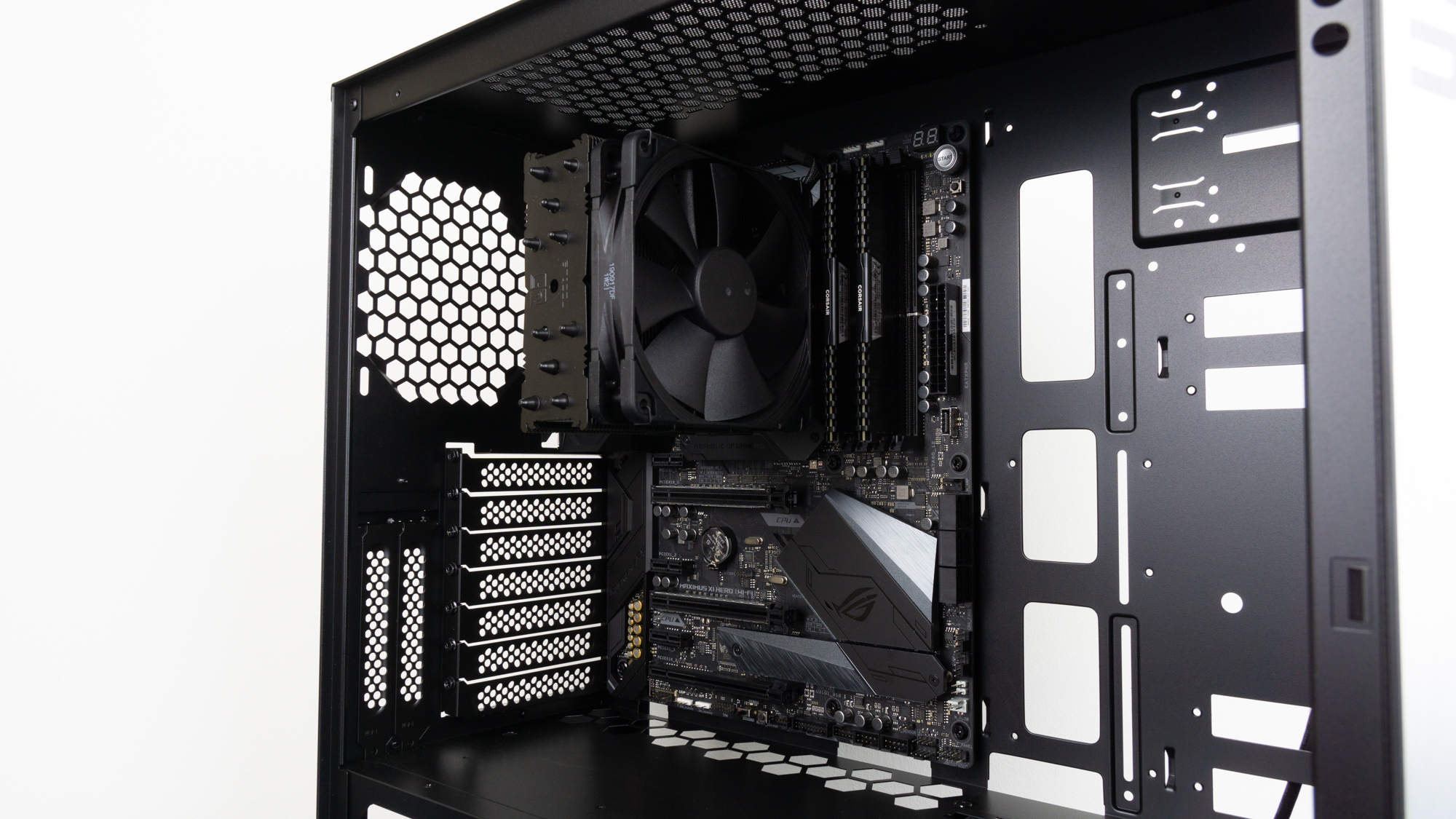
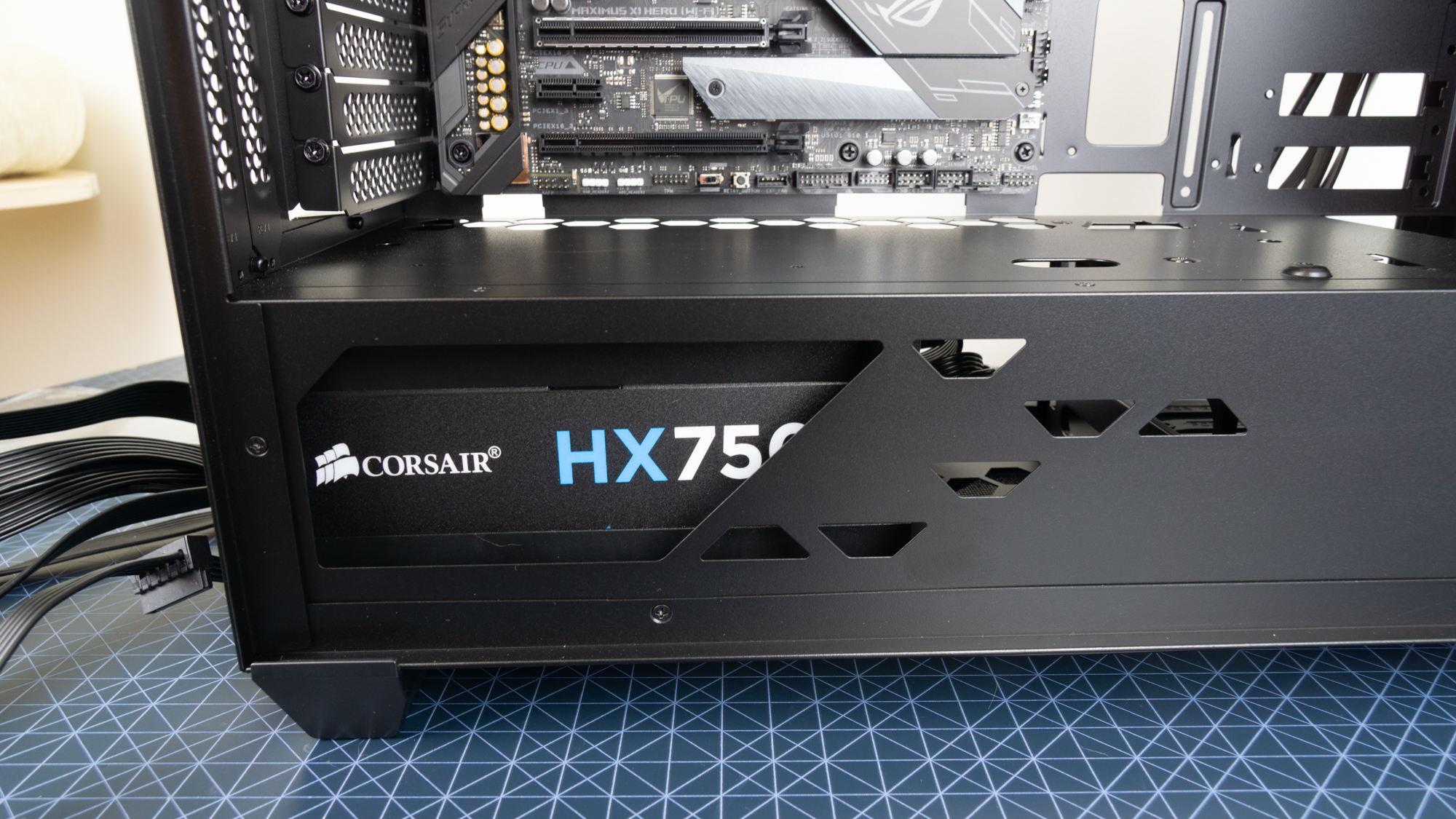
Our PSU fit nicely, as did the 3.5-inch hard drives. Overall, installing the components didn’t provide any major issues as there was plenty of space to work in.
One thing we didn’t like was that the schrew holes at the top weren’t sunken, leading to ugly protrusions where the fan screws end up installed.
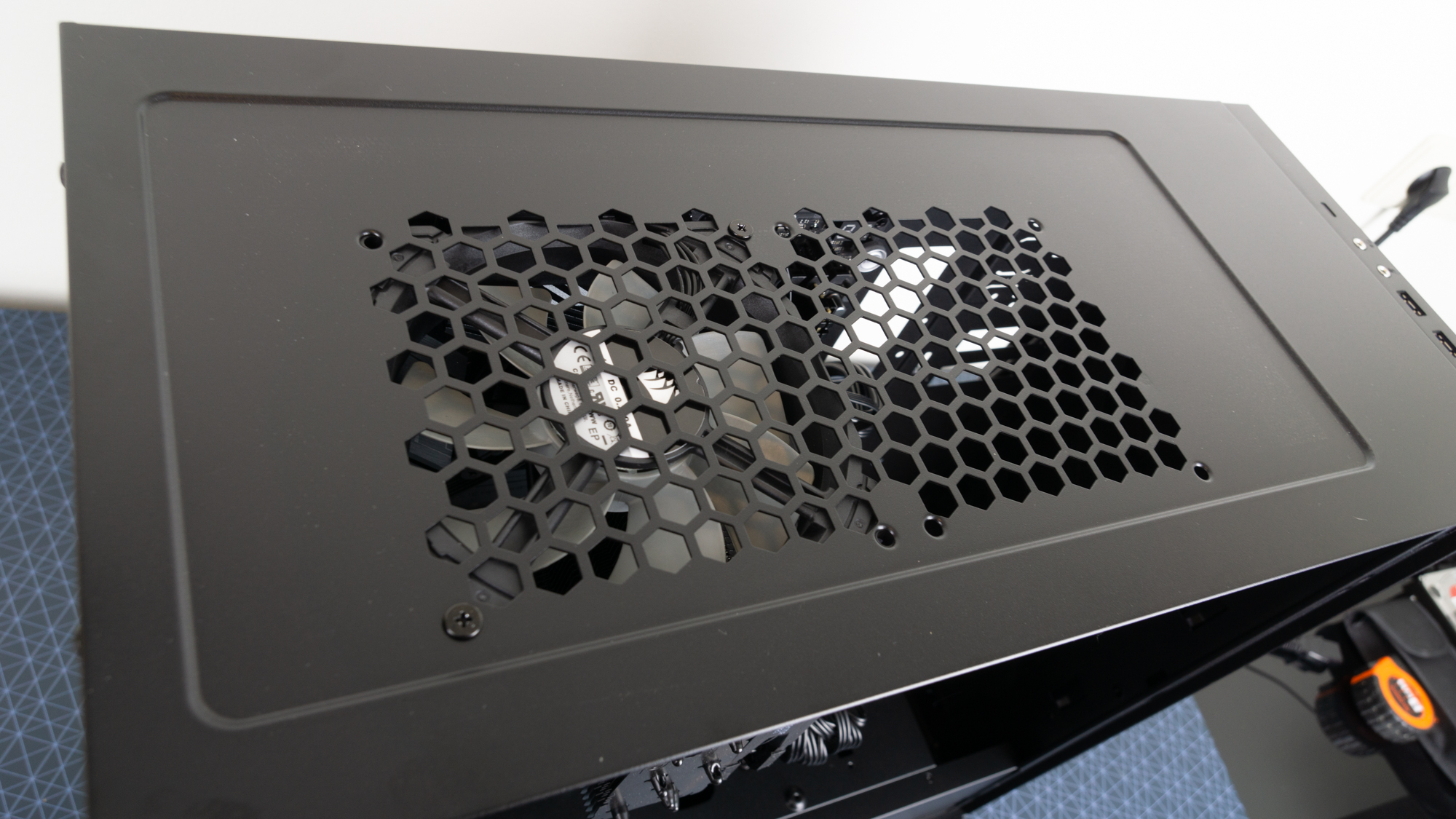
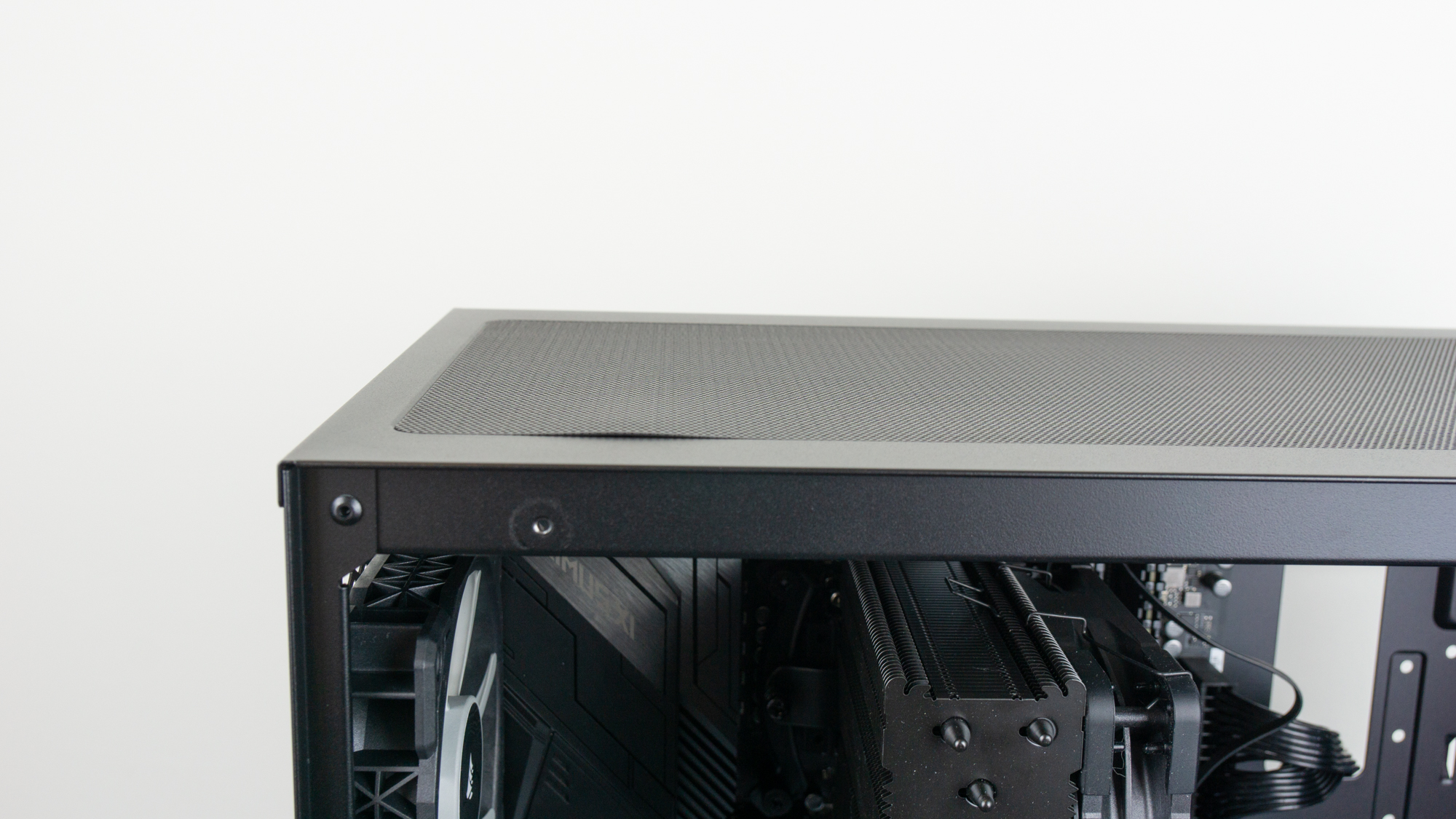
Cable Management
Behind the motherboard tray, the InWin 216 provides a roomy 25 mm (just shy of an inch) of space for cable management, which is more than ample. However, that’s where the great cable management qualities end. There are no grommets or covers, leading to too many visible cables on the inside. Again though, the extreme tint on the tempered glass panel hides most of the mess anyway, so this can partially forgiven.
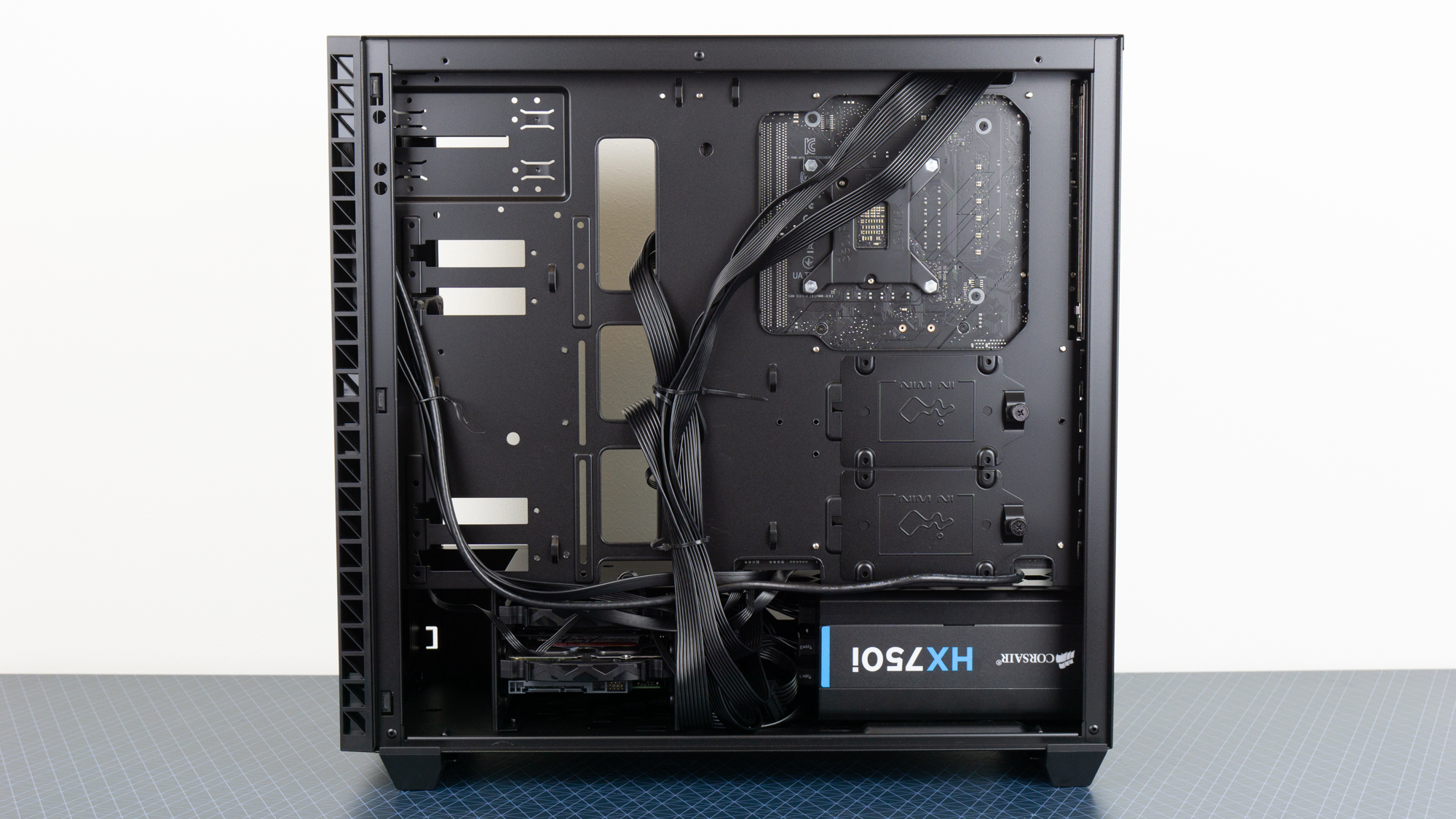
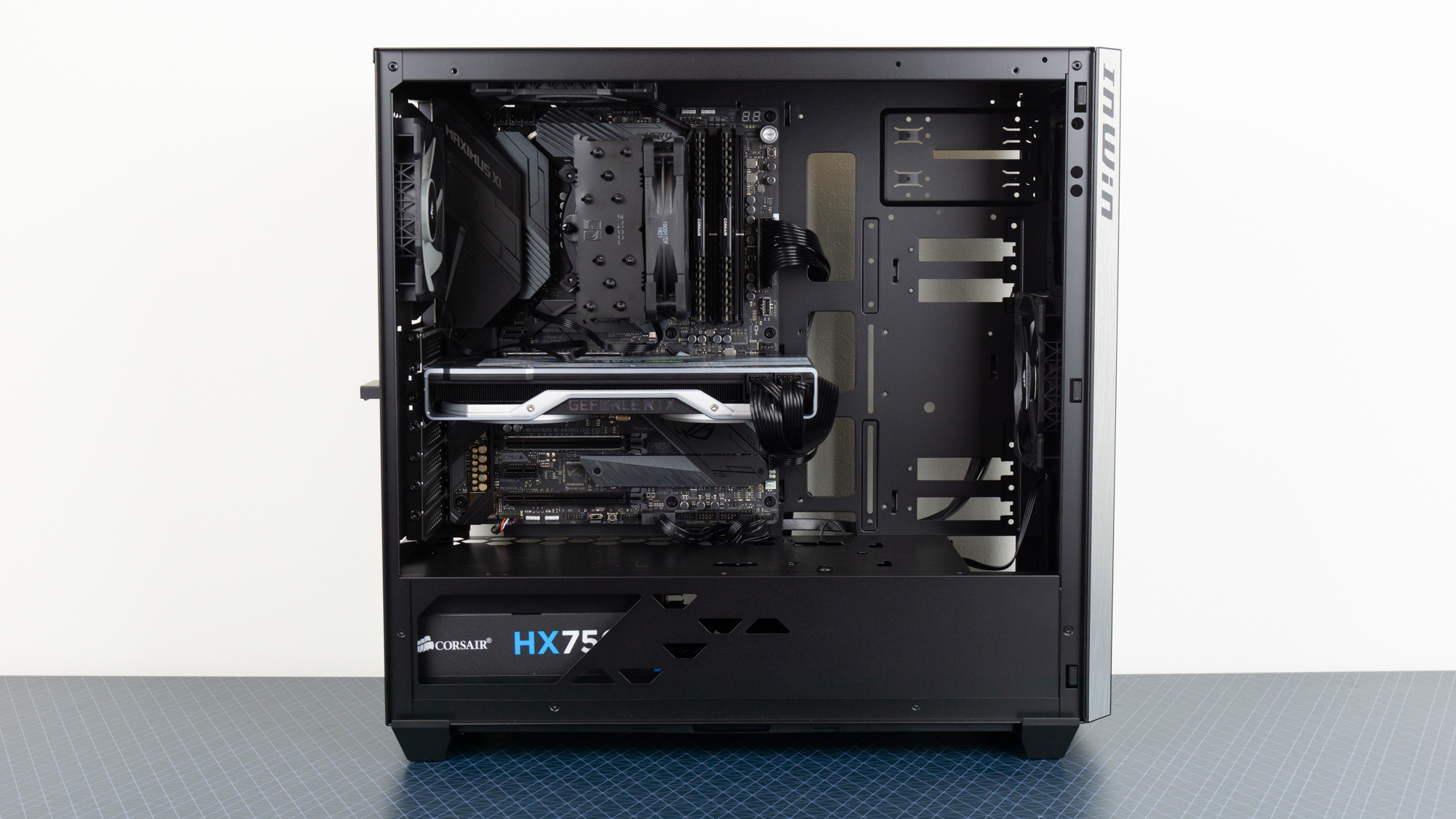
There also included no Velcro straps, but a small handful of zip-ties were included. Due to the sheer amount of cutouts on the PSU shroud, we could see the cable mess lurking underneath.
Get Tom's Hardware's best news and in-depth reviews, straight to your inbox.
Current page: Hardware Installation
Prev Page Specifications and Features Next Page Testing and ConclusionNiels Broekhuijsen is a Contributing Writer for Tom's Hardware US. He reviews cases, water cooling and pc builds.
-
Phaaze88 Looks nice, but fails on some quality of life things - namely fans and cable management.Reply
80USD is too much for this chassis.
There's also the matter of E-ATX not having a dimensional standard... -
FrozenGerbil While InWin does have various cases that look stylish on the outside (e.g. their 900-series and wayyyyy-overpriced Signature series), the interior design and layout of ALL InWin cases ranks behind at least 10 to 15 other case brands. Even though Enermax also has mediocre case designs, even Enermax has far better interior designs than InWin. Most of InWin's cases have huge gaping holes and cutouts on the mobo tray that don't have any logic to them, as if all of InWin's case designers think that they need to add some holes since other case brands have interior cutouts, but their designers are clueless on sizing and placement of holes.Reply
And for a company that has been around since the 1980s, InWin's designers have never understood the concept of adding rubber grommets in those big holes that they cut out in the mobo tray. Even their $300 and $3000 cases do not include any rubber grommets and they expect you to attach cable combs and carefully route cables yourself. So I think of all InWin cases as being "Lamborghini on the exterior and Ford Escort on the interior", or parking at a flashy Neiman Marcus store but then realizing that it is actually a 7-Eleven once you look inside - all exterior styling and very little substance to the interior design.
When you compare every InWin case to those from Corsair, Phanteks, Cooler Master, etc, it is clearly obvious that InWin's designers just doodle designs on their CAD software, but their designers have never actually created stylish builds using their own designs. In both online product images and printed user manuals, some of their cases just show a really old X79 or Z97 mobo with a stock Intel cooler installed in their new cases. So that is why InWin cases always have really terrible interior designs! It is like a cook who never tastes what he cooks - the cook thinks the soup needs salt, but he doesn't know how much salt to add so he adds two cups of salt into his soup without ever tasting it, the meats get undercooked, and the vegetables get overcooked. -
Phaaze88 Reply
They're likely aware of their 'flaws' to the point that it's their MO.FrozenGerbil said:While InWin does have various cases that look stylish on the outside (e.g. their 900-series and wayyyyy-overpriced Signature series), the interior design and layout of ALL InWin cases ranks behind at least 10 to 15 other case brands. Even though Enermax also has mediocre case designs, even Enermax has far better interior designs than InWin. Most of InWin's cases have huge gaping holes and cutouts on the mobo tray that don't have any logic to them, as if all of InWin's case designers think that they need to add some holes since other case brands have interior cutouts, but their designers are clueless on sizing and placement of holes.
And for a company that has been around since the 1980s, InWin's designers have never understood the concept of adding rubber grommets in those big holes that they cut out in the mobo tray. Even their $300 and $3000 cases do not include any rubber grommets and they expect you to attach cable combs and carefully route cables yourself. So I think of all InWin cases as being "Lamborghini on the exterior and Ford Escort on the interior", or parking at a flashy Neiman Marcus store but then realizing that it is actually a 7-Eleven once you look inside - all exterior styling and very little substance to the interior design.
When you compare every InWin case to those from Corsair, Phanteks, Cooler Master, etc, it is clearly obvious that InWin's designers just doodle designs on their CAD software, but their designers have never actually created stylish builds using their own designs. In both online product images and printed user manuals, some of their cases just show a really old X79 or Z97 mobo with a stock Intel cooler installed in their new cases. So that is why InWin cases always have really terrible interior designs! It is like a cook who never tastes what he cooks - the cook thinks the soup needs salt, but he doesn't know how much salt to add so he adds two cups of salt into his soup without ever tasting it, the meats get undercooked, and the vegetables get overcooked.
They're still in business, which means there's an audience out there for their impractical, yet innovative designs.
I say innovative, because it's just been more of the same old-same old crap from the other guys. :sleep:
When I hear In Win, I have some degree of anticipation, because I can almost always expect something quirky from 'em. -
watzupken Reply
While they are not the first brand I think of when getting a casing, but I agree that they tend to have some interesting casing designs.Phaaze88 said:They're likely aware of their 'flaws' to the point that it's their MO.
They're still in business, which means there's an audience out there for their impractical, yet innovative designs.
I say innovative, because it's just been more of the same old-same old crap from the other guys. :sleep:
When I hear In Win, I have some degree of anticipation, because I can almost always expect something quirky from 'em. -
FrozenGerbil ReplyPhaaze88 said:They're likely aware of their 'flaws' to the point that it's their MO.
They're still in business, which means there's an audience out there for their impractical, yet innovative designs.
I say innovative, because it's just been more of the same old-same old crap from the other guys. :sleep:
When I hear In Win, I have some degree of anticipation, because I can almost always expect something quirky from 'em.
Actually, I think InWin is not aware of many of their flaws and how to fix them.
Yes, one of InWin's oft-used slogans is "Contemporary & Innovative", and it is great that they try to push the boundaries on some of their designs. But InWin's "sweet spot" for value is their 300-series cases (e.g. their 303). InWin's low-end products, like their new 200-series and all-plastic Alice, are poor values even at their lower prices. InWin's Alice is novel, but it is actually way-overpriced at $55 USD for a flimsy plastic frame that is completely missing front I/O ports and audio jacks. And like this 216's review saying that the 216 has lots of wasted space, InWin's Alice has even far more wasted space and stupid layout decisions than this 216. At the high-end, InWin's 900-series and Signature cases all have terrible interior layouts compared to other brands of high-end cases; e.g. Phanteks' $900 Elite has a far better design and far better value than InWin's $1000 928.
InWin also has The Worst Powder Coating in the entire PC case industry. JayzTwoCents mentioned that his InWin 928 interior was "the worst that he has ever seen in a PC case", inexcusable for a $1000 case. I am an experienced powder coater and I can tell you that many InWin cases have what powder coaters call "orange peel" flaws where the interior surfaces feel like very fine sandpaper, instead of being silky smooth, due to either the metal not being properly grounded during powder coating, the powder gun being positioned too close to the metal, too much powder being sprayed on, or bad cleansing and preparation of the metal prior to powder coating.
When you run your fingers across the interior of many InWin cases, it leaves pale-white streaks on the black metal because that "orange peel" powder-coated surface is literally sanding off some of your fingers' dead skin cells, leaving a whitish streak on the black mobo tray. If your fingernail rakes the interior metal, your fingernail leaves white marks that make you think you scratched the metal, again because the rough powder coating files off fingernail particles that get embedded into the textured surface. InWin uses automated powder-coating rooms in their factory. But this "orange peel" flaw is what some beginner powder coaters notice when they manually spray powder coating and beginners fix these orange peel flaws during their first month of learning. Powder coating is not difficult. But InWin has not learned how to consistently get silky-smooth powder coating for 30+ years now :-( No other case manufacturer has this problem. Even the generic $30 cases mass-produced in China have a smooth powder coating finish.
btw, I have been using PCs since the early 1980s and building PCs since the early 90s, and I currently have 17 InWin cases:
1 Z-Tower
6 Tou 2.0
2 Winbot
3 H-Frame 2.0
InWin 805i Infinity
InWin A1
InWin Alice
2 InWin B1
I currently have 53 total desktop computers, starting from a near-mint-condition 1984 IBM PC/AT 5170 onward, so I am familiar with all PC brands and cases since the 1980s. Lian Li previously had some strange case designs (e.g. their PC-Y6B yacht PC case). Silverstone invented the rotated mobo concept in 2008 with their RV01 Raven case. Phanteks and Cooler Master both have numerous innovations to their interior layouts. Only InWin is really clueless when it comes to internal layout design.
When CaseLabs permanently closed in 2018, I predicted in 2018 that "InWin will eventually become the next CaseLabs" due to a combination of poor corporate financials, product quality and design that does not match their pricing, and lack of a consistent base of fans. I still believe the next medium-to-large case manufacturer to close will be InWin. If you know how to read corporate financial reports, InWin is a publically-traded company on the Taiwan Stock Exchange under the company ID of "6117", so InWin publishes quarterly details of their financials. Since around 2015 onward, for each profitable quarter that InWin has, they have 3 to 5 negative-profit quarters. So InWin has been bleeding cash for at least 80% of every year since 2015. Enermax, another Taiwan company, has more boring products than InWin. But Enermax has about 2 negative-profit quarters for every 2 positive quarters. Just a few years ago, Thermaltake had a smaller market capitalization than InWin. But Thermaltake, Cooler Master, and others have now sped past InWin for both market share and financial strength.
The purchasing rule for ALL InWin cases is that you have to really like their exterior styling enough to downplay the poor designs and layouts of most of their interiors and the poor value compared to other brands in the same price range. InWin is all about "style over substance", while CaseLabs was all about substance and customization over style (even though many loved CaseLabs' no-nonsense server stlying of their cases). All of InWin's new 200-series cases have boring external style and inferior internal design.
InWin has their annual stockholders meeting at the Taiwan Stock Exchange office on November 28 of every year and their presentations are posted on YouTube (you can search for "TWSE 6117" on YouTube). Up until 2017, InWin's once-a-year stockholders meeting had 25 to 30 stock analysts sitting in the room to listen to the InWin president's presentation. In 2018 and 2019, there were only 4 stock analysts attending each time. So it is clearly evident that the Taiwan investors have also lost interest in InWin. -
eye4bear Did anyone at Tom's check these article? At the end it mentions a $100 be-quiet case yet the link is to a $155 be-quiet case.Reply -
Phaaze88 Reply
3rd party sellers price gouging.eye4bear said:Did anyone at Tom's check these article? At the end it mentions a $100 be-quiet case yet the link is to a $155 be-quiet case.
The be quiet! Pure Base 500DX is supposed to be 100USD.
